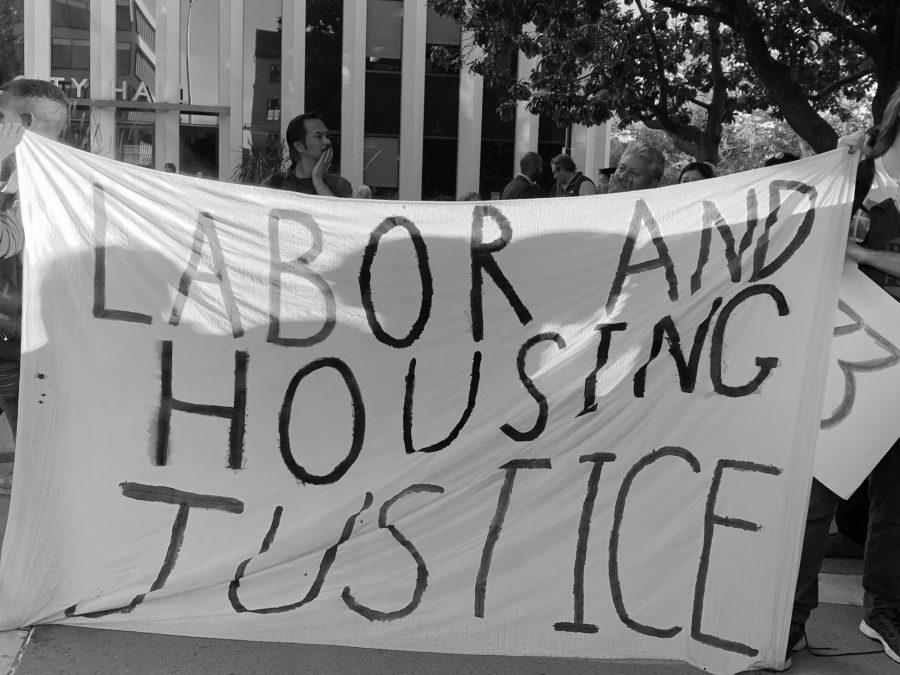S
tanford University’s decision to abruptly cancel its 3.5-million-square-foot expansion means that the Palo Alto Unified School District won’t be getting extra students from the planned housing, but also won’t be receiving the tens of millions of dollars that would have come along with these new students.
Stanford’s surprise announcement on Nov. 1 to pull back from major expansion plans that were at least three years in the making also apparently ended the side agreement that the school district was hoping to implement with Stanford.
“Our major concern was mitigating the impact of additional housing that was going to be built under the new GUP (General Use Permit),” said Todd Collins, vice president of the PAUSD school board. “If there is no GUP, there won’t be any new housing, so no need to mitigate.”
Stanford’s announcement was made four days before a meeting on the GUP, which could have been the last before Santa Clara County decided its fate. If the permit had been approved, Stanford would have been allowed to build additional academic facilities and more than 2,600 new beds for students by 2035, plus additional housing for workers.
Collins said he thinks Stanford did not want to implement some of the conditions the county wanted.
“I can’t speak for the Board as a whole, but from my point of view, I wasn’t surprised,” Collins said. “Stanford had indicated for several months that it wouldn’t accept a permit with the conditions the county had proposed, and the county had continued to indicate that it would not negotiate or even discuss a development agreement. Something had to give, and the upcoming vote forced the issue.”
Collins does not think that the cancellation will have a big impact on the district.
“I think it does not affect the District or our students,” Collins said. “In some ways GUP process has been good for PAUSD – it has improved our ties to and relationship with Stanford, and we’ve found areas of common interest. We’ve also established a structure and floor level for mitigation, for if and when Stanford does build future rental housing.”
Two weeks prior to Stanford’s announcement, the Stanford Coalition for Planning an Equitable 2035 organized a rally to address its perspective on the planned expansion. SCoPE 2035 is a group of students who support a “fair” outcome in the negotiations between Stanford University and the county. The committee was particularly interested in issues regarding housing, transportation, labor provisions and greenhouse gas emissions.
According to SCoPE 2035 board member Shelby Parker, the rally was successful.
“We had hundreds of students show up for an action off campus, which is hard to do,” Parker said. “We were also excited that 100 or so students stayed for the beginning of the hearing (on Stanford’s proposal.”
In addition to Stanford students, public school advocates and community leaders were also present at the protest at King Plaza in Palo Alto. Rally attendee and PAUSD Board of Education member Shounak Dharap addressed one concern: “The issue that everyone is trying to solve is what happens if Stanford builds and more students come into PAUSD for whom there is no funding,” Dharap said.
One controversial aspect of the GUP involved the agreement between Stanford University and PAUSD, in which Stanford agreed to pay $138 million to the district over 40 years. The deal specified that the university would pay $5,800 yearly for each new student who joined PAUSD as a result of its expansion plan.
“We agree that PAUSD deserves money for extra students being sent into the district,” Parker said. “However, it is unethical for Stanford to make this money contingent on a development agreement.”
Due to objections from Santa Clara County, Stanford suspended the agreement it negotiated directly with PAUSD.
According to the Daily Post, the agreed-upon $138 million represents about 30% of the cost of educating the additional students that the Stanford expansion likely would have brought.
“Ideally, the outcome is full mitigation,” Dharap said. “For every student that comes into PAUSD, we will get a corresponding amount of money to support the infrastructure that will overall support those students…this is what everyone is advocating for.”
Crop also said the part of the $138 million Stanford agreed to pay the district would have gone toward the cost of building 550 additional homes for students and employees.
Crop also raised concerns with the funds attached with the agreement.
“We absolutely can’t accept hundreds of new students unless they come with funding.”
The university expansion would have generated more than 9,000 jobs. Crop said that for this many people, 550 homes is not enough, but rather the actual number of estimated homes needed would be closer to 2,000.
According to SCoPE, another goal of the rally was to show the Santa Clara Board of Supervisors how much Stanford students care about improving the conditions of workers on campus, specifically including their experience as it relates to commuting, traffic and housing.

